on
News
- Get link
- X
- Other Apps
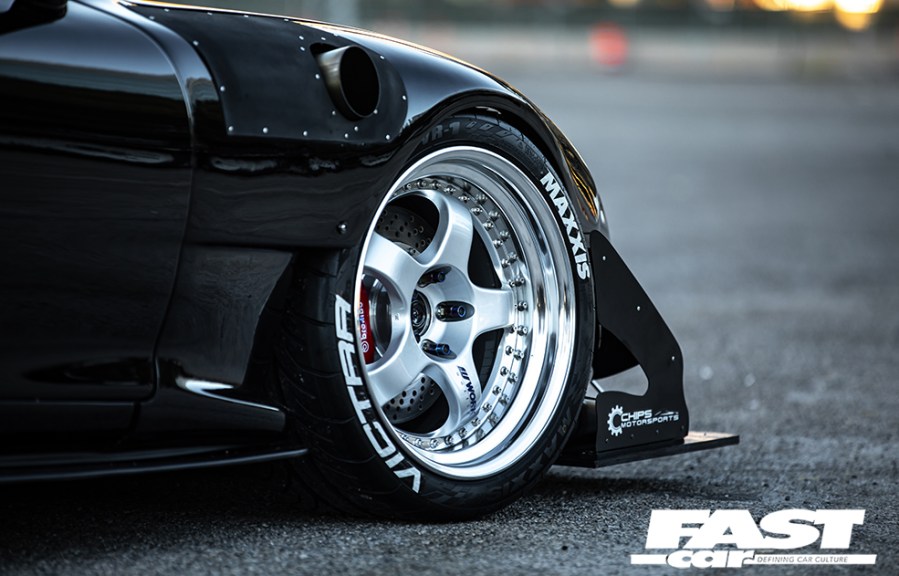
Looking for the best Mazda RX-7 suspension? Well, whatever the type of build you’re going for, we’ve got you covered.
When it comes to aftermarket suspension, it’s not simply a case of ‘one size fits all’. Instead, you’ll want to opt for a different set-up depending upon two things: A, which generation of Mazda RX-7 you own, and B, what your tuning goals are. So, without further ado, here’s the best Mazda RX-7 suspension that the aftermarket has to offer. If you don’t own an RX-7 but are looking at upgraded suspension, be sure to check out our guide to the best car suspension in 2023.
For some extra background info on suspension, feel free to check out the following resources first:
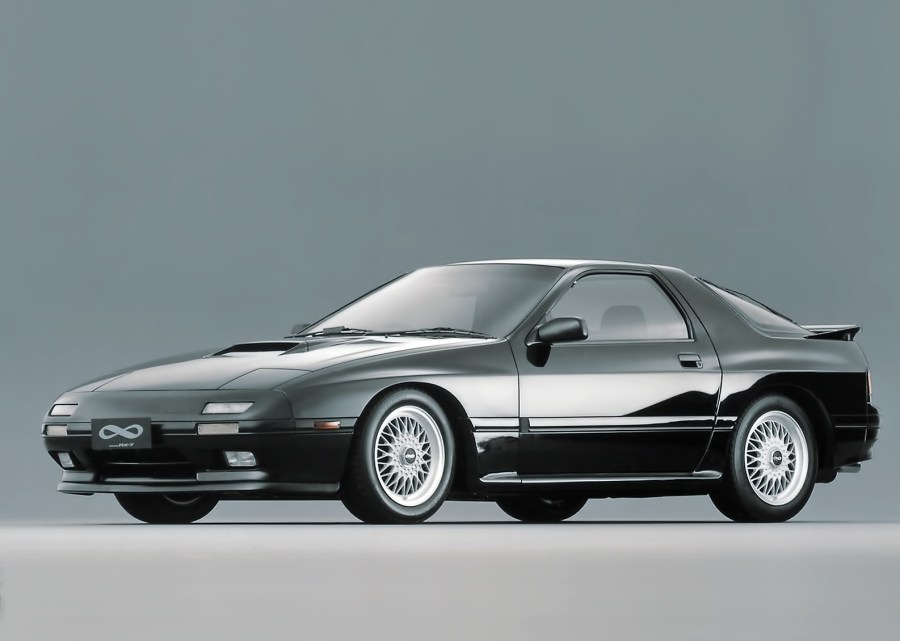
Although still a fun car to drive, the second gen ‘FC’ is arguably the least athletic RX-7 in its factory guise.
Aimed primarily at the American market, Mazda designed the FC to be more of a GT cruiser than a true B-Road specialist. As a result, it came with a number of suspension revisions compared to the original SA22 RX-7, though they weren’t to everyone’s liking.
The headline piece of tech was Mazda’s Dynamic Tracking Suspension System (DTSS), which adjusts the toe angle at each wheel depending on cornering force. The intention was to improve stability, though as a knock-on effect, it does reduce the amount of feel and feedback sent back to the driver.
Similarly, Auto Adjusting Suspension (AAS) was another new feature on the FC. This tech alters the damper settings in line with the road surface for an improved ride, but like DTSS, it also numbs the driving experience.
It wasn’t all bad news though. The original SA22 RX-7 had quite a twitchy rear end, but that was largely corrected in time for the FC by swapping its live axle for an independent rear suspension set-up instead.
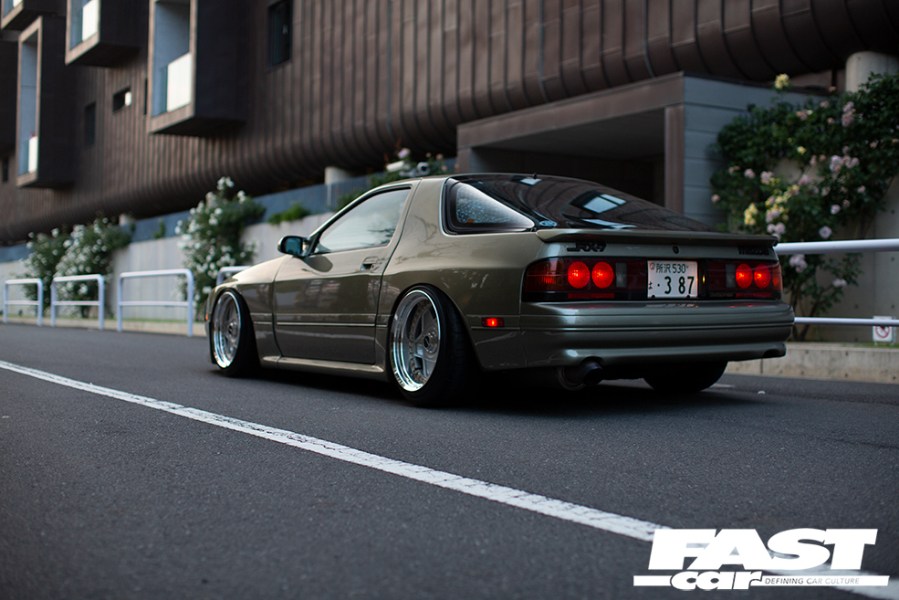
If you want the best results from a suspension upgrade, we’d suggest opting for a set of coilovers rather than lowering springs – if you’ve got the budget for it. This is because as well as getting that lower ride height, coilovers also present you with much more adjustability to get the balance right between comfort and performance. Whereas, with lowering springs, you’re locked into a firmer spring rate. It’s also worth noting that coilovers come with a spring rate that’s matched to the dampers as, after all, you’re buying the full package in one kit. With lowering springs, that’s not the case, and as result your ride quality may suffer.
One of the top coilover kits out there for the Mazda RX-7 FC is the ISR Performance Pro Series. These come with 32-way adjustable damping, a monotube design, and front pillowball mounts. ISR deemed its previous ‘basic’ coilover kit good enough for Formula Drift, but these Pro Series examples are a technological step up from those, suitable for both street and track use. You can order them direct from ISR for $925 (£756), though some online retailers sell them at a higher premium.
If you aren’t keen on ISRs, BC Racing is another hugely reputable brand that provide aftermarket coilovers for the FC. The entry-level BR kit is more capable than its pegging within BC Racing’s product hierarchy suggests, and as such costs a little bit more than the ISRs. You’re probably also paying a bit more for the brand name. You’ll have to spend $1284 (£1049) on the BR series kit, but as far as coilovers go, that’s still within the reasonably affordable bracket.
Our final top pick for street use is the HSD Monopro. They retail for $1024 (£845), however you can often pick them up for a bit less than that in a sale. At the time of writing, HSD will sell them to you directly for a reduced rate of $930 (£760). However, it’s worth noting that these HSDs only offer 16-stage damping adjustment, which is about half the amount of adjustment you get with either the ISR or BC Racing kits mentioned above.
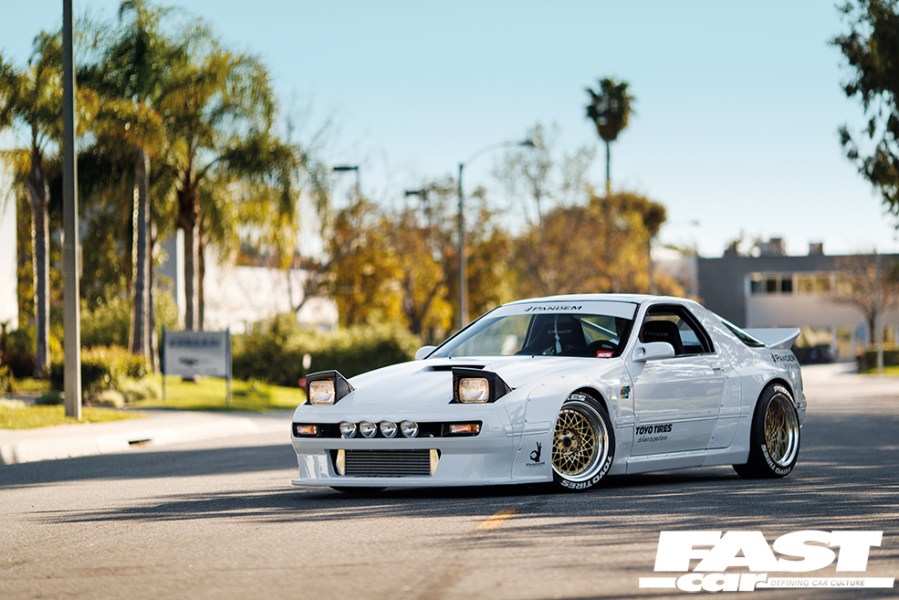
What if your FC RX-7 is a more specialized build though? A car destined for circuit use only, perhaps. Well, happily there’s plenty of hardcore performance-oriented coilover kits on the market that place less emphasis on road comfort for the sake of all-out handling gains on the track.
An example of the top end of this genre is Yellow Speed Racings’s Advanced Pro Plus kit. You can get them with either a 3-way ($3551/£2902) or 2-way ($2873/£2348) design, where the 3-way option adds the ability to adjust high-speed rebound (how quickly the vehicle rises after hitting a bump).
If you can’t quite make your budget stretch that far, D2 Racing will hook you up with some circuit-tailored coilovers for $1510 (£1234) instead. Don’t think the reduction in price is a sign that they’re no good either. D2 claims that this kit has been used to achieve more than 250 race victories at grassroots level, and they offer an impressive 36 stages of damping adjustment.
But what if you don’t what to do track days or time attacks? Well, KSport’s got you covered. They’ll sell you coilover kits for the FC RX-7 designed for either road rallies or drag racing, each kit costing $1900 (£1553) to buy. Or, if you prefer going sideways, you can grab some drift-focused coilovers from them for $2050 (£1675).
TEIN also provide a drift coilover kit for the RX-7 at a slightly more affordable price ($1790/£1463). They come with 16-way adjustability, a twin-tube structure, pillowball upper mounts, and a pedigree of competing in D1 GP. Speaking of D1 GP, Yellow Speed Racing’s Dynamic Pro Drift coilovers were partially designed by triple Japanese drifting champion, Yoichi Imamura. A set of those will cost you $1900 (£1553) normally, but at the time of writing they’re on sale for just $1480 (£1209).
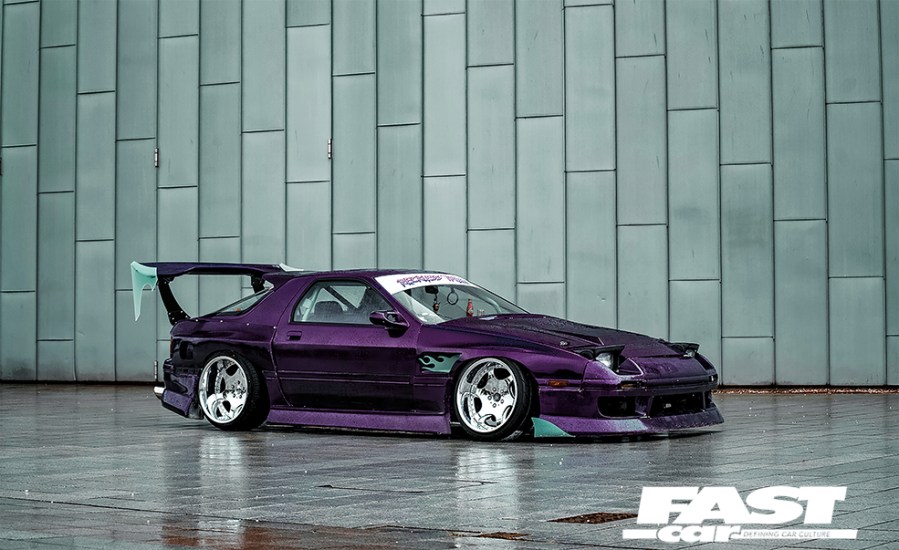
To get the lowest possible stance without committing yourself to a life of scraping every driveway and speed bump, air suspension is the way to go. These kits rely on air compressors to lower and raise the car, meaning that you can slam it right to the ground at a car meet, before lifting it back up again for the drive home.
The downside is that these things aren’t cheap. The most expensive air suspension we could find for the Mazda RX-7 FC was the KS Racing Premium Wireless kit. It comes packed with functionality including custom user pre-set ride heights, independent corner adjustment, ‘rise on start’, Bluetooth app control, and much more besides. The cost for all this tech? $6600 (£5393).
AirREX, meanwhile, will sell you a full kit for around $6000 (£5000) or you can pick up the struts alone without the management system for $2937 (£2400). Airdynamiks offer one of the most attainable air kits for the FC though, priced at $2340 (£1912) for the full suspension and management system, or $1500-$2000 for the struts alone, depending on spec.
For a cheaper alternative to air suspension, Yellow Speed sell a ‘Super Low’ coilover kit for $1325 (£1078). This will achieve an 80mm-130mm drop in ride height, but remember you can’t just flick a switch and raise your FC back up again for the journey home.
If times are a little tough and you don’t have masses of cash to splash on some new suspension, don’t worry too much. There are a number of options out there designed to cater to tighter budgets.
On the coilover end of the spectrum, you could opt for a set of FIVE8s for $705 (£574). However, be aware that these don’t come with any damping adjustability, and instead will be pre-set by the manufacturer. But hey, at least you know that the spring rate will definitely be correctly set-up for the damper (unlike with simple lowering springs).
If you don’t see the point in non-adjustable coilovers, fair enough. Lowering springs with set ride heights can also be sourced for the Mazda RX-7 FC that simply fit around the standard shocks. They’re much cheaper than coilovers. For example, well-respected Japanese brand TEIN offer FC lowering springs for just $192. Expect a ride height reduction of between 1-2 inches with those.
Beyond the actual springs and dampers, there’s plenty other elements of the FC’s suspension that you can alter and upgrade.
If you’re after upgraded anti-roll bars to improve body stability through corners, Ultra Racing will provide them as well as a range of strut braces. You can view all of those products here.
It may also be worth replacing any old worn rubber bushings with new polyurethane ones. In fact, speaking of bushings, JJLR Performance sell a DTSS delete kit for $175 (£142).
For a closer look at the best ways to modify your Mazda RX-7 FC, check out our dedicated tuning guide. Or, if you’re in the market for one, check out our buyer’s guide instead.
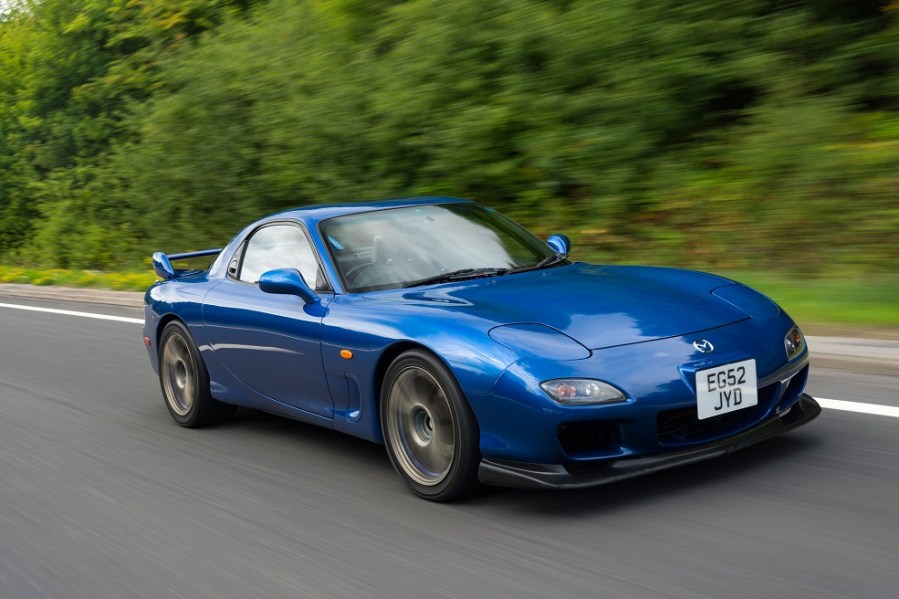
For many, the third gen ‘FD’ RX-7 was the peak of Mazda’s RX family tree. In fact, some might argue that it’s one of the best sports cars to ever come out of Japan, and a big part of that comes down to the way it handles.
Whereas the FC it replaced was quite soft by design, the FD restored the RX-7’s image as a true driver’s car. It was lighter, more powerful, and dialed in to attack apexes rather than glide over them. Its ride is by no means rough, but certainly gives more feedback than the FC.
From the factory, the FD RX-7 came equipped with independent double wishbone suspension at both the front and rear of its chassis.

For street use, the golden standard is Ohlins’ Road & Track coilover kit. Priced at around $2000 (£1800), Ohlins R&T ensures that ride quality isn’t sacrificed in the name of performance gains on the road. In its standard guise it’ll be a marked improvement over the stock set-up, however if you really want something a bit more hardcore, this Ohlins kit can do that too. Making adjustments to the damper stiffness is quick and easy. For a more extreme performance-focused tune, all you have to do is turn the golden knob clockwise to put the coilovers into ‘race mode’. Then when you’ve had your fun and your back’s starting to ache, simply twist it back again for a comfortable drive home.
Alternatively, BC Racing provide an ER Series set of coilovers for the FD RX-7, which they market as their most advanced suspension technology yet. That kit will cost you around $2000 including VAT, but if you can’t afford those then BC Racing’s BR Series coilovers (as mentioned above in the FC segment) are also available for the FD.
HKS is a tuning brand that most Japanese car enthusiasts will be very familiar with, and naturally they supply a range of coilovers for the FD RX-7. The Hipermax S kit retails for $1750 (£1427), though if you’ve got a bit more cash to play with, the more advanced Hipermax R coilovers are worth a look. Those are priced at a more aspirational price point of $2680 (£2185) though.
Sticking with reputable Japanese brands, TEIN Mono Sport coilovers offer 16-way damper adjustability from a single-tube design. A full set of those costs around $1500 (£1300). Or, for a more comfort-focused ride (while still offering noticeable handling and ride height changes), you could grab some TEIN Flex Z twin-tube coilovers for just $986 (£804).
Finally, APEXi is a brand that’s well associated with the FD RX-7. In fact, when Yoichi Imamura won the 2003 D1 GP championship in an RX-7, he did so as part of the APEXi drift team. A set of APEXi N1 EXV coilovers represent a fairly attainable option, priced at $1044 (£851).
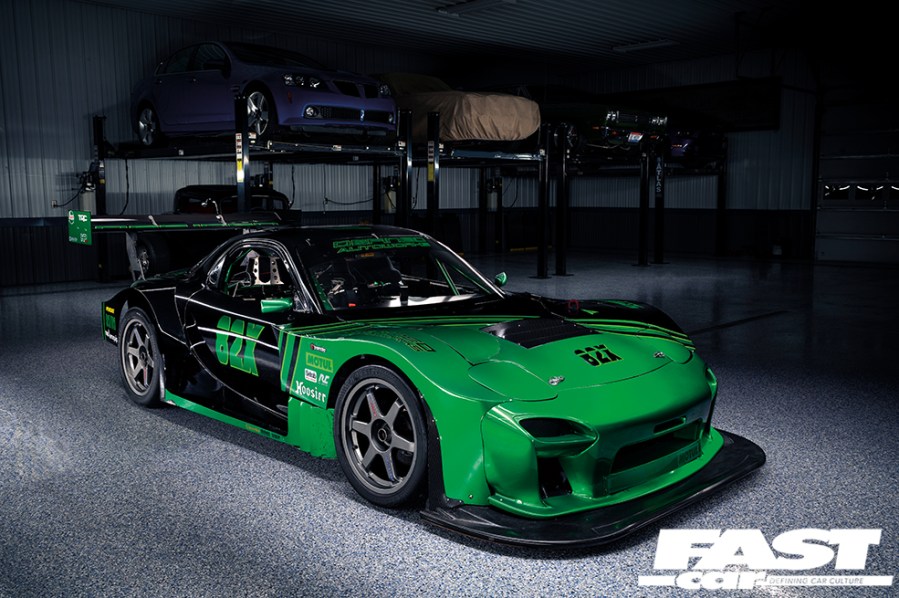
Full-on track day and time attack builds require something a little more special though. Suspension which doesn’t give a damn about roadgoing ride quality, but instead focuses on extracting the best handling out of a car on a smooth closed circuit.
Nitron have pedigree in the grassroots motorsport scene, and with that pedigree comes both impressive tech and slightly daunting price tags. Their NTR R1 kit is a proven beast for the track, but it will cost you $3432 (£2798).
For about a grand less, BC Racing offer their ZR Series coilovers with 3-way adjustability, while KSport produce even cheaper options. Providing specialized kits for road rallies, drag racing, and drifting, you can pick up a set of KSports for $1615 (£1317) over at Redline360.com at the moment.
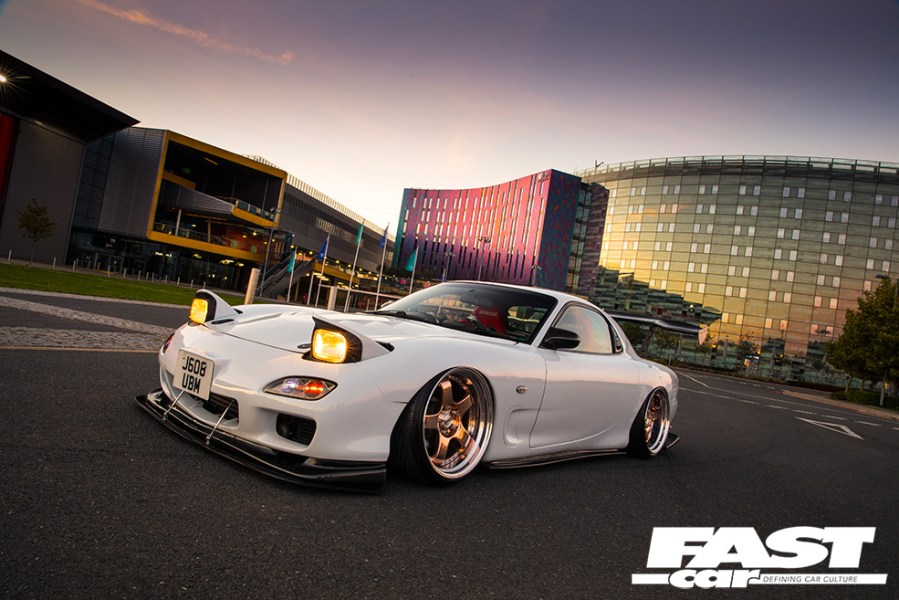
For a seriously low stance that won’t cripple your FD RX-7s usability, you’ll want a set of bags. AirREX sell a full air suspension kit (complete with digital management system) for north of $5000.
Or, for slightly less money, you could bag yourself a Stealth suspension package with Air Lift 3P management system. That combination is available for $4631 (£3748).
Of course, there are much cheaper ways to get a slammed look, and we’ll be covering those next…
As far as coilovers go, you don’t really want to be cheaping out on those. As a general rule, anything less than about $600 probably isn’t worth putting on your car, if you can even find kits at that price point for the FD RX-7.
However, that’s not to say that you have to spend four figures to get yourself a decent coilover kit. TEIN’s Street Advance Z set-up, for example, provides improved handling and a lower stance for just $765 (£624).
Then we get to lowering springs. Whereas coilovers come with the springs and shocks combined in one package, lowering springs are just the springs, and thus have to sit around your car’s stock shocks. This raises a few downsides as we mentioned above when covering them for the FC RX-7, however if you’re really on a tight budget, you won’t get more bang for your buck with any other option.
H&R promises a 1-1.25 inch drop in ride height from its FD RX-7 lowering springs, which are priced at a comparative bargain ($258/£210). TEIN S-Tech springs should offer a similar lowering effect for even less ($204/£166). Or, if you’re concerned about the impact that non-adjustable lowering springs will have on your FD’s ride quality, you can opt for some TEIN High Techs. These only lower that car by 0.7-0.8 inches, and sell for the same price.
In addition to simple springs and shocks, you’ll get the best handling results by upgrading other elements of your FD RX-7’s suspension too. Hardrace suspension arms, for example, allow for a wide range of camber, castor and toe adjustment. Plus, they come with rose jointed ends, removing any slop found in the standard ends which are rubber bushes.
That solution may be a bit overkill if you’re just doing fast road stuff though. If you’re not doing serious time attacks, you’d get favorable enough results simply by swapping the worn bushes out for polyurethane ones. Powerflex does full front and rear kits.
For a closer look at the best ways to modify your Mazda RX-7 FD, check out our dedicated tuning guide. Or, if you’re in the market for one, check out our buyer’s guide instead.
Finally, it goes without saying that whichever generation of RX-7 you have, and whatever type of build you’re striving for, you should always get a geometry alignment carried out after installing new suspension parts or wheels & tires. Your average garage should be able to ensure that everything’s straight, but if you want to dial in some custom camber or toe set-ups, then head to your nearest specialist instead.
Comments
Post a Comment